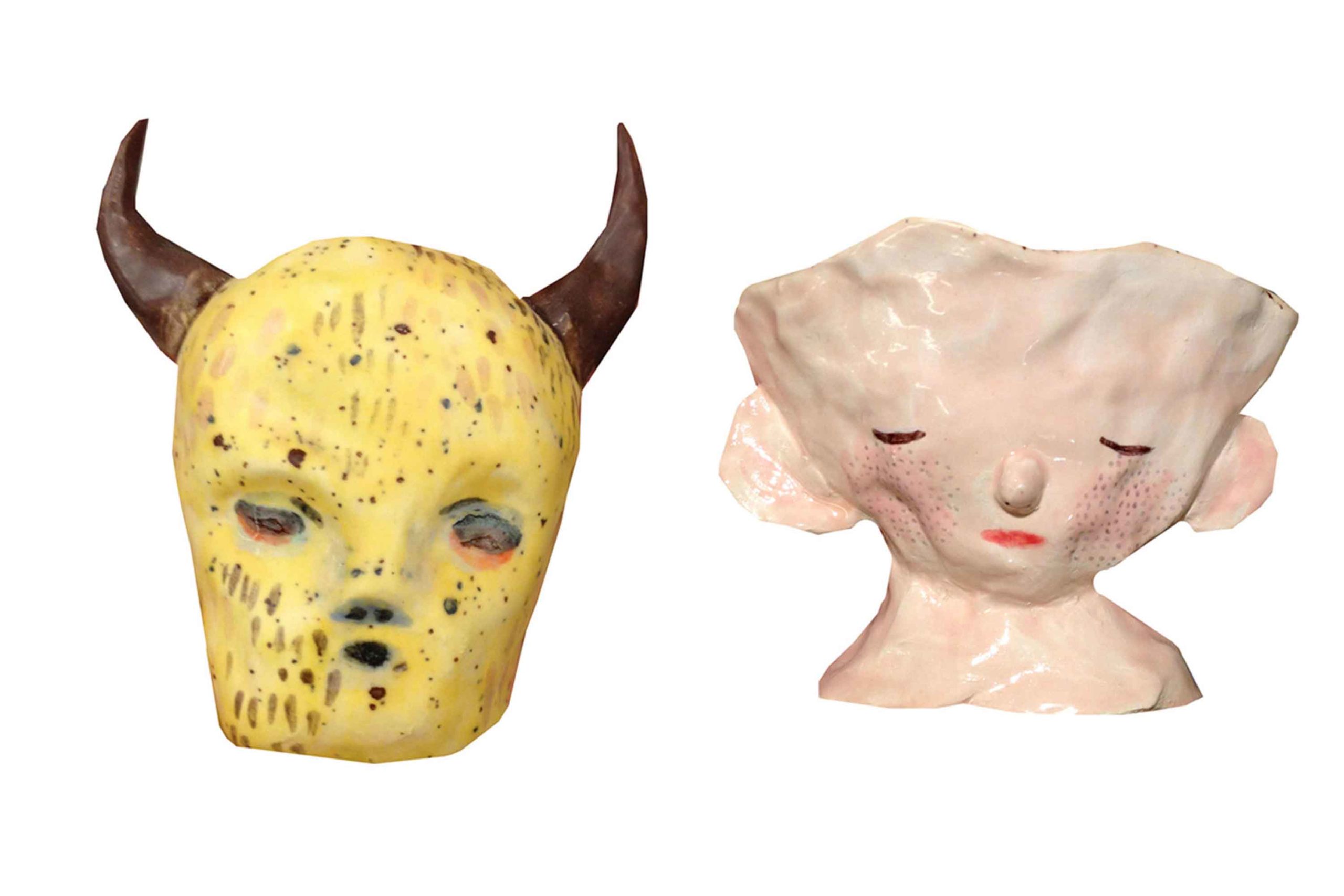
March 28, 2020
Kendra, Yee,
Thoughtful
March 28, 2020
Kendra, Yee,
Thoughtful
Kendra Yee is a Toronto–based artist, designer, and curator. Be it ceramic sculptures; a visual language so spectacularly rich in its mark–making or the whimsical realization of these characters in clay.
Yee centres her practice around the exploration of her lived experience, in conjunction with collective memory. In such a way, she forms childlike, almost speculative worlds, where fluid characters come to life, no longer confined to the planes of the second-dimension, but corporeal, tactile beings. Yee attended the Ontario College of Art and Design University until 2017 and most recently, was an artist in residence as well as exhibited at Juxtaprojects in NYC (2019). In addition she has worked on a few recent projects which include; editorial illustration, branding, art direction, workshop programming and site specific installations. We met up with her at her studio to have a chat.
As an artist you work in a variety of mediums. Do you find it challenging to switch between them?
As an artist, I approach projects with a “jack of all trades” mindset. I started off doing illustration at OCAD, graduating in 2017. Clients will approach you with a question and you have to create the answer to it through a visual interpretation. It’s great, it’s a collaboration, but at the end of the day it definitely doesn’t feel like your own project. You don’t have full creative control, but it really does push your work to ideas that you couldn’t come up with yourself.
So is it weird that you don’t have full creative control?
Yeah – I did a lot of illustration work a couple years ago, working on many editorial projects. You end up developing an image for words, but it still feels like someone else’s idea. It pushes you to think differently, but at the same time, you feel as though your ideas are too wacky to connect to a larger audience. In some ways, the images become very literal. I always found it challenging to pull myself back, thinking “this is for a client,” rather than my own experimentation. Perhaps that’s why I turned to sculpture and large-scale installation.
Right so how long have you been sculpting?
I was doing design work for about three years, and have been attempting sculpture and installation for the past two years. When do you call yourself a professional? That’s always the question at the end of the day.
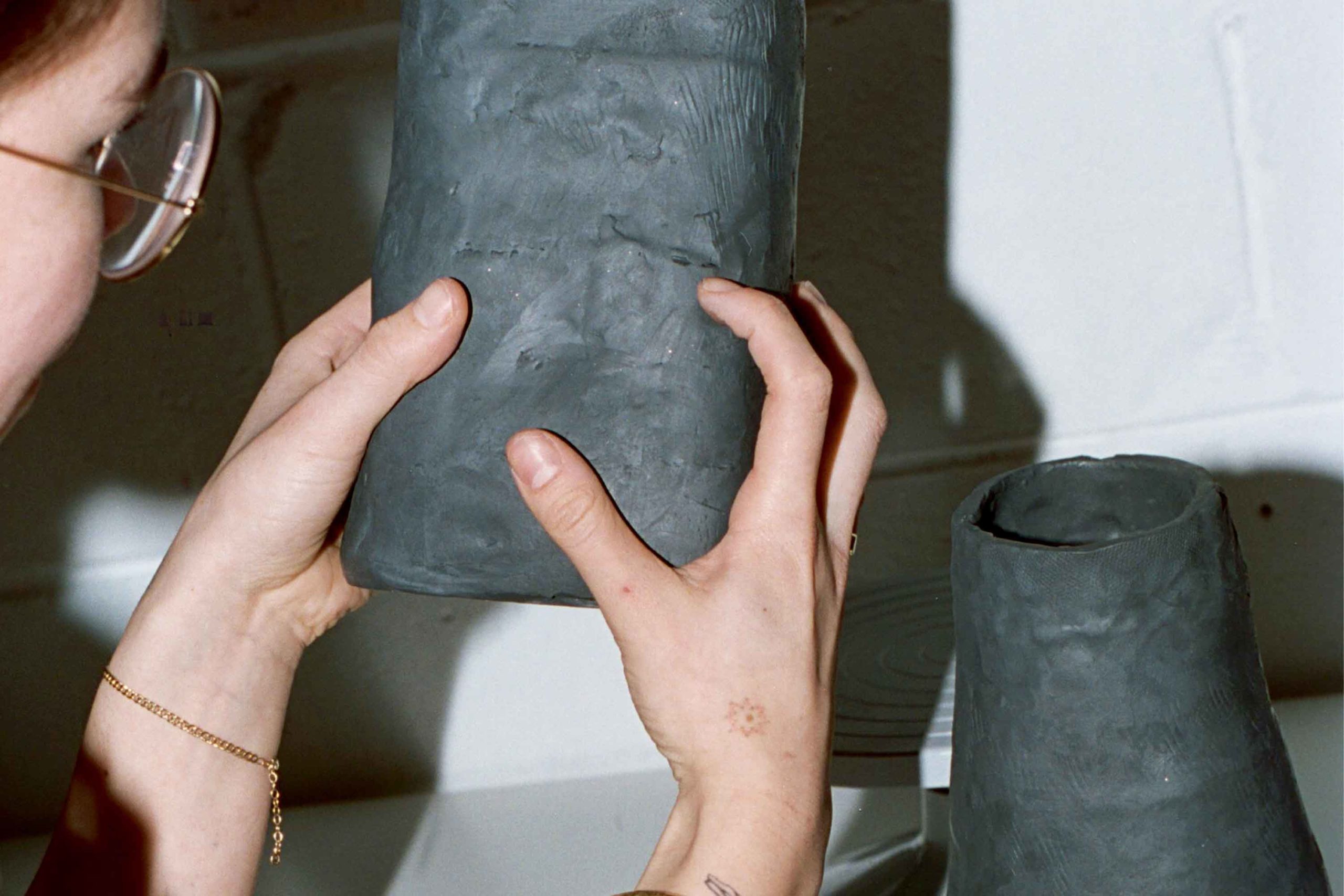

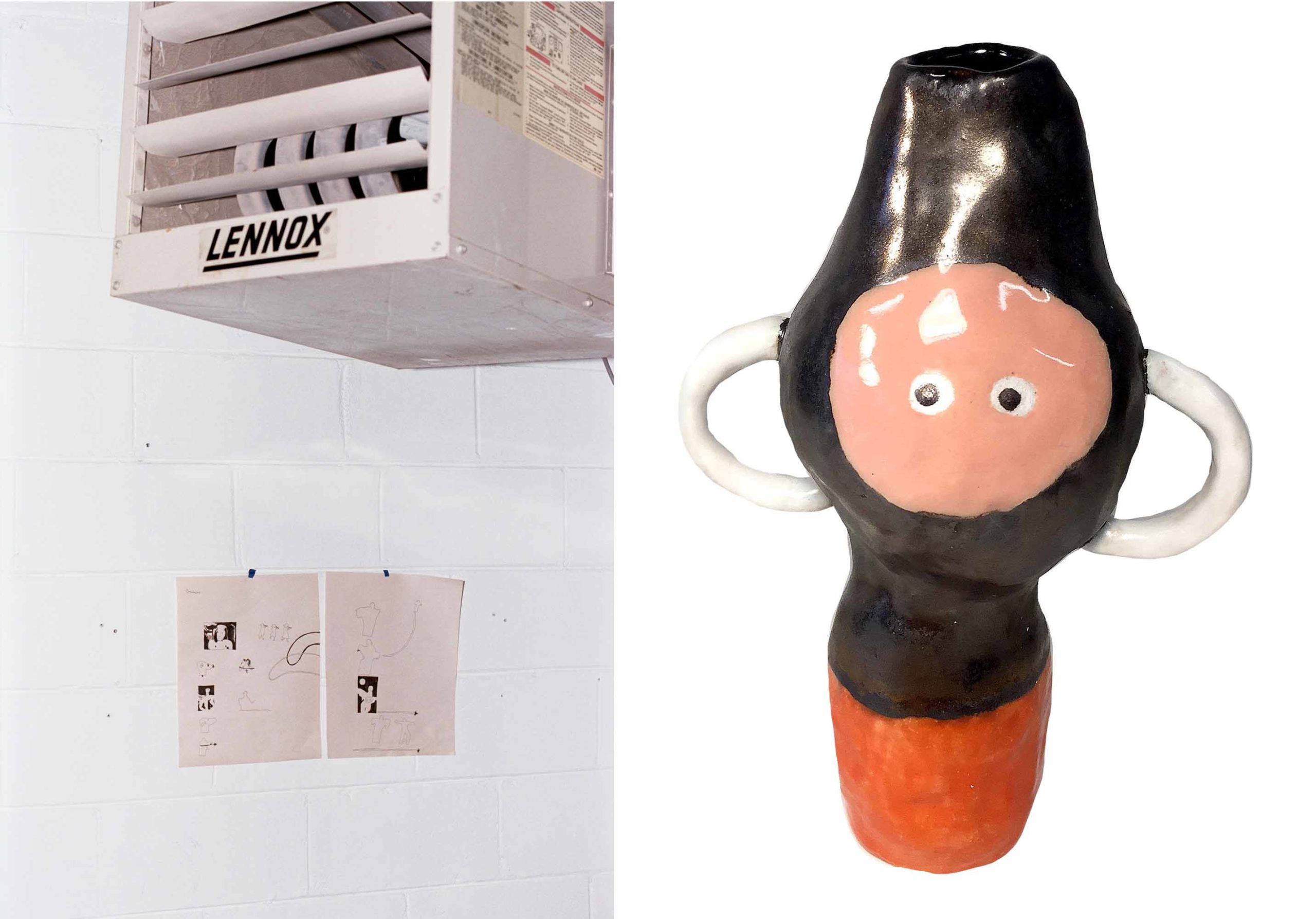
“I approach projects with a “jack of all trades” mindset.”
People can often pinpoint specific events during childhood that informed the career choices they made in adult life. What do you think were the key events that shaped who you are today? And is that where you draw inspiration from?
It’s funny my parents always talk about this one story from when I was a little kid. They must have read it in some parent guide book or something, but decided it was a good idea for child development to use food colouring in mashed potatoes – that it would help with learning, playing and creating. I, naturally, ate all my blue mashed potatoes, and I think from there, they knew I was an entirely different kind of kid. But for me, I struggled a lot, especially in elementary school and high school with traditional academic spaces. I just did not understand the curriculum or the way they were teaching it. In terms of confidence, it really takes away from your experience in school and you don’t feel like you’re smart enough for these spaces. Once I began exploring visual mediums and alternative modes of thinking, I began to find non-traditional ways to participate in school. Art classes were always my favourite. I remember when recess came around I would hate going outside. I just wanted to stay in and draw. I think those smaller explorations were where I developed a lot of confidence. When I was in middle school, I took a very traditional water-colour class. It was specifically for people in their early retirement to find a hobby. At first I wasn’t really sure if I could actually be a part of the class because I was so young. The first class that I had with the teacher, he was like, oh, she was really struggling with the material because it was all about perspective. You just have to draw a basic cube. The technique to draw a basic cube is that it’s the same mindset, essentially like repeated in order to make it a three dimensional shape. For some reason, I just could not understand traditional perspectives and illustrate [them]. So at first he was like, I don’t think this is going to work out and then my mom was like no, just give her one more chance like maybe it will be okay. Next class all we did was paint water-colour flowers for three hours with one subject material and I just loved doing that because you’re able to zone out and appreciate it and spend time with what’s in front of you instead of being so eclectic and moving around distracted through your phone. You never get spaces like that. So from there he was like, Oh, I can see that this is the material that she wants to engage in like this is definitely something more up her alley instead of just doing strict three dimensional drawings.
So all this essentially started from the blue potato?
Haha yeah the blue potato. I still love the color blue too so I’m wondering if it also affects the outcome of [my] pieces.
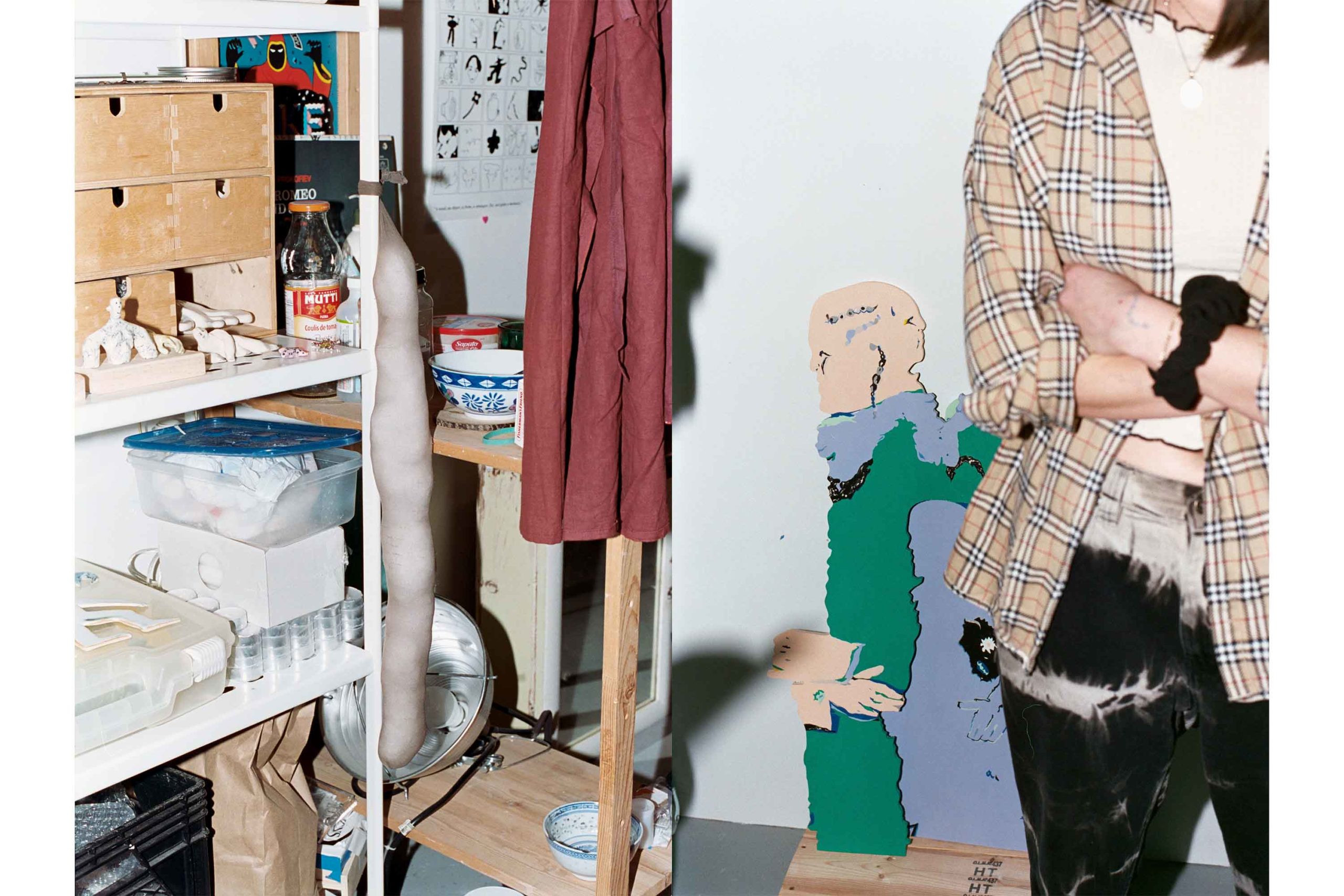
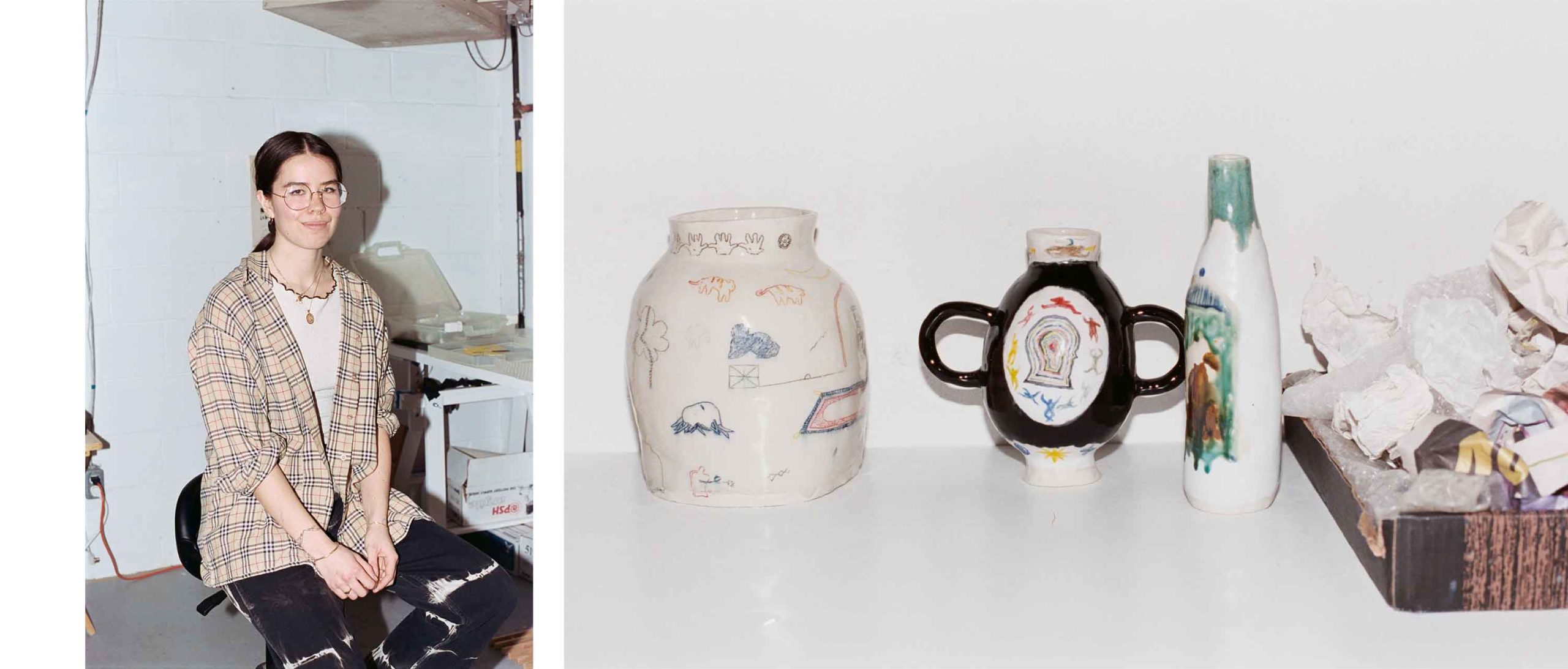
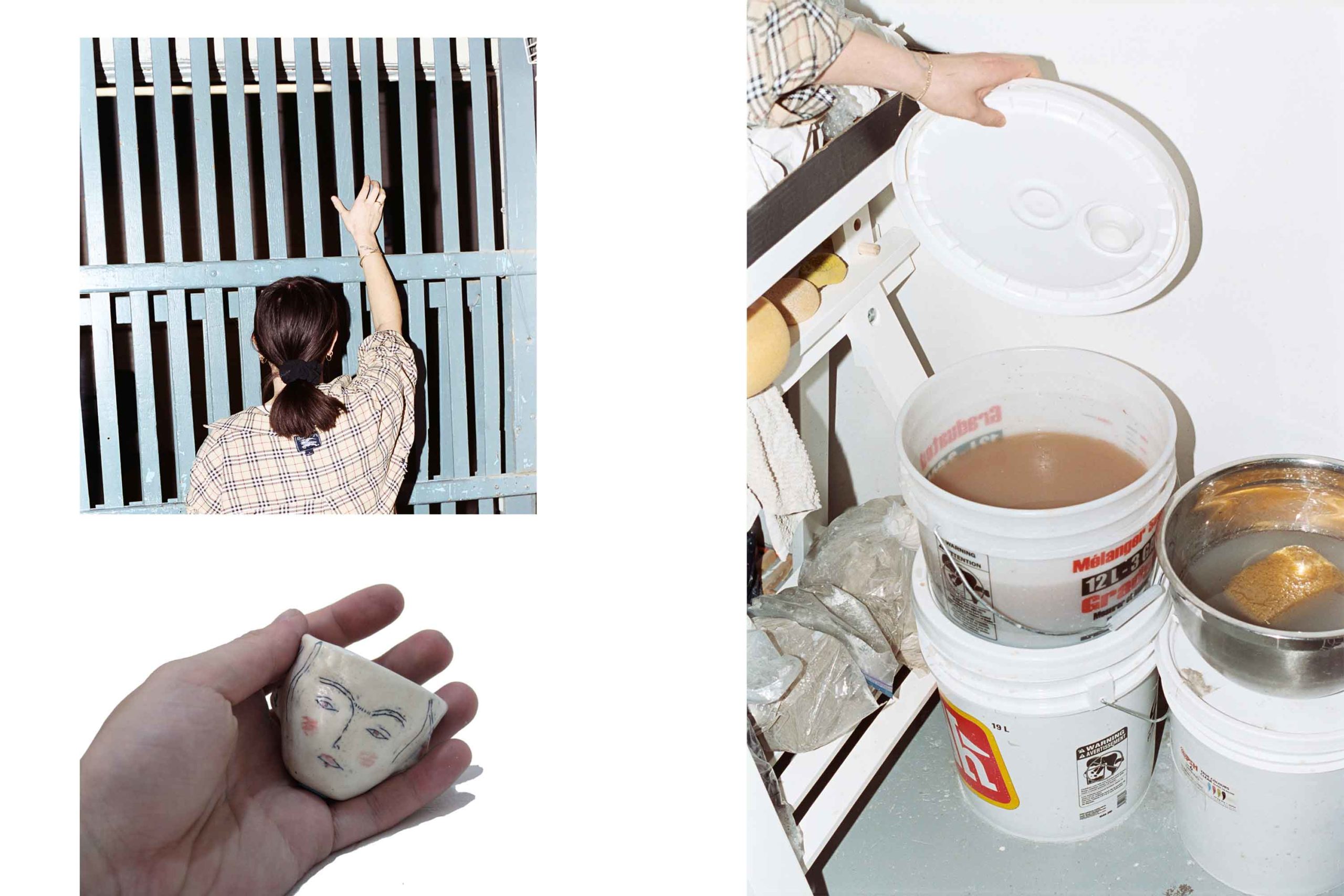
Is it important to you that your work is viewed in a particular context? I get a sense of humour and playfulness from your work. Is that what you intend?
Yeah definitely. A lot of art is one big inside joke with yourself. There’s a lot of perspectives where it’s like, oh, I want to be laughing at what I’m producing. Of course there’s more serious elements and aspects to it, but I think if you’re not laughing and playing with the medium, then it really takes away from the experience. I really value the process of building the pieces. I used to joke around whenever I was working on a ceramics piece and was going in a direction that I didn’t like, I would just draw a smiley face on it and I’m like okay, it makes me feel a little bit better. But I think a lot of my work also surrounds the conversations with the viewers to experience these spaces. So I rock a lot of personal narratives and historical narratives into the work. I’m also curious to know what the viewer experiences or sees within it. So it’s the melding of these two past memories in order to form a new memory over these objects or into these spaces. So through those conversations, it’s just a wide array of people telling me anything and even people say they see darkness within the work, so I was playing with lightness and darkness also to the pieces. Experimenting with these in-between contexts where it’s not one thing or another. And what kind of conversations lie in-between this unknown space. It’s not illustration work on ceramics, for example, but it’s also installations and also painting. Yeah, all these different kinds of realms.
How would you define art now?
That’s a hard question. How would I define art now? That’s a tricky thing.
Could be a one word answer?
I’m really obsessed with algorithms at the moment. I don’t know if this is a good thing or a bad thing and I was just discussing with my friend the other day about how on one hand social media is great because it connects you to a larger community. On the other hand, the way that abstracted contexts can be programmed into a very specific formula. The ways that it’s becoming something we’re not even having to think about the contents that’s in front of us. Rather we’re just channelled in a feed sense so that it removes us from the ways that we actually experience it. I always say there’s been a couple pieces of my life that’s really hit me and impacted me but I’ve never had that experience online, just because you’re so distracted or you’re only paying attention for a quick second. It’s not actually something that you involve yourself into a greater degree. So I don’t think I would define art as an algorithm-like process, but I think it’s interesting to see where that’ll lay with the future of either producing art or experiencing art or talking about art, because even in these really traditional processes and institutions – ceramics is kind of viewed as a craft, but having these digital interactions is a wild thing to be creating.
“A lot of art is one big inside joke with yourself.”
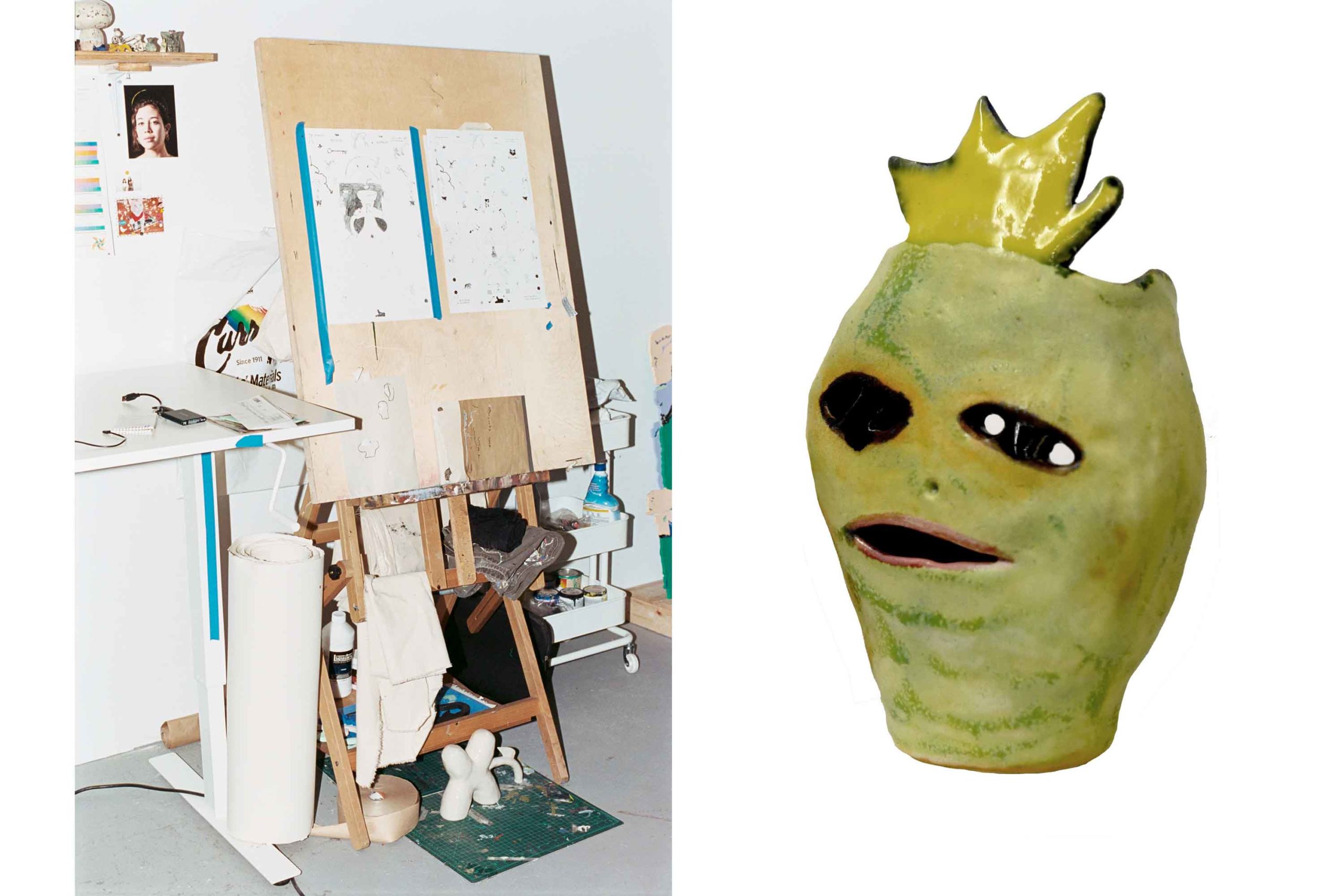
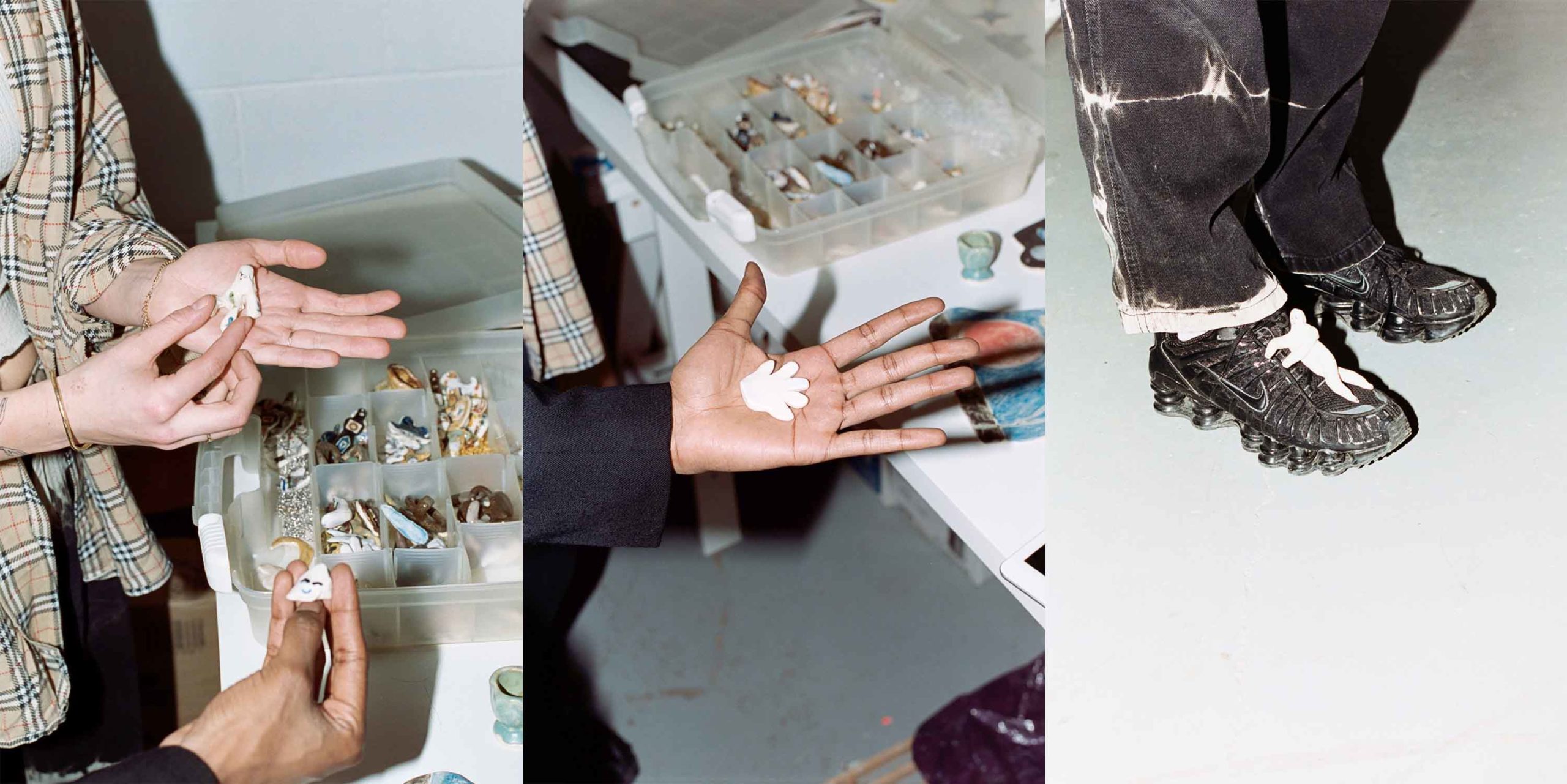
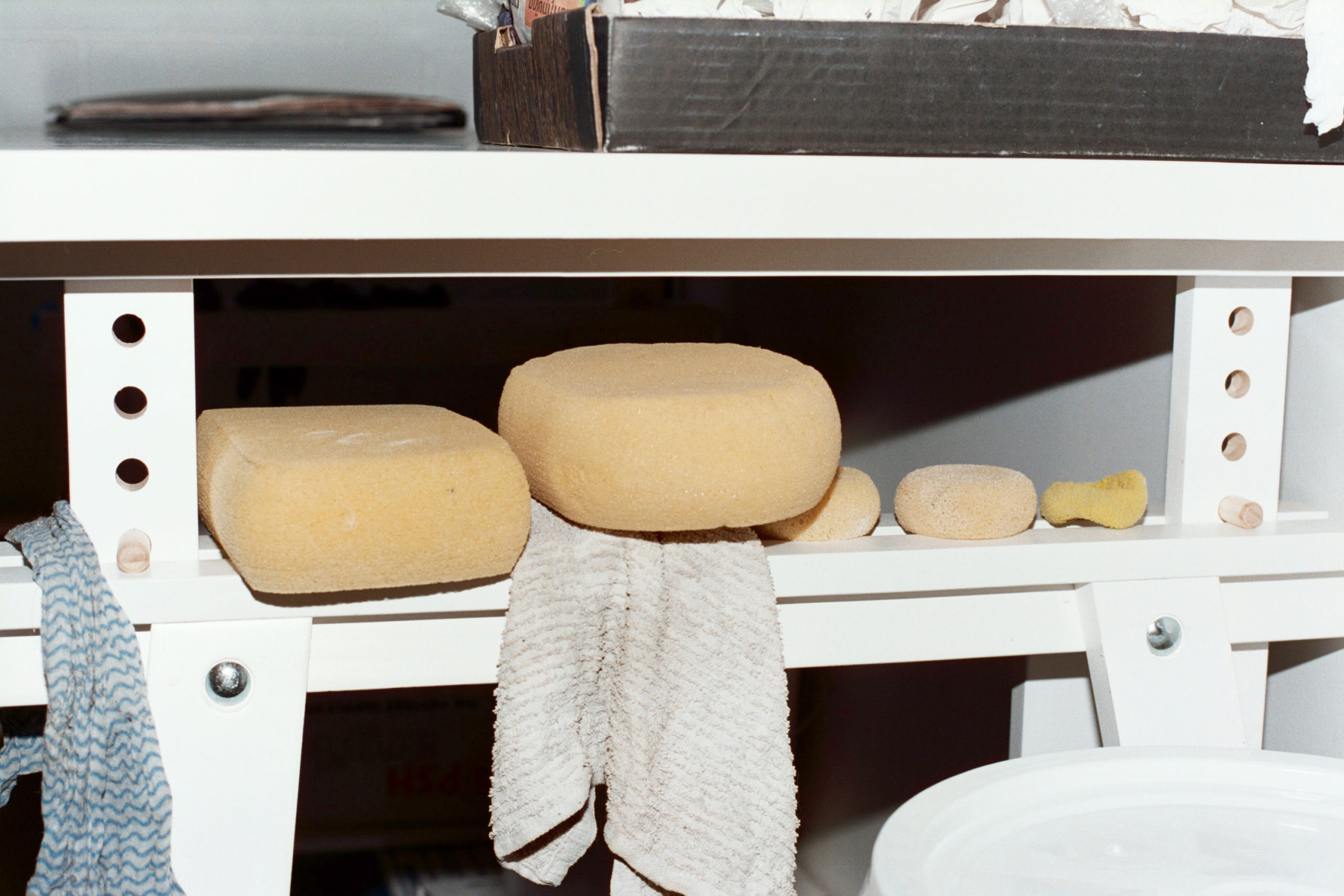
“I’ve also been doing boxing recently and I love it.”
So do you think social media is hurting the way we view art?
I don’t know. I wouldn’t get money if it wasn’t for social media. I wouldn’t be able to advocate and represent myself if it wasn’t for having more control of [my] image. I was listening to this podcast the other day, and they were talking about how Mark Zuckerberg has erased all his online messages from the past 10 years. He values that privacy associated with it.
That’s so ironic.
Right? Exactly. But he won’t let other people do that – to be able to erase those experiences. You think that you’re so reliant on these apps. It’s what they want you to do. So I think it’s just being cognizant and aware that Instagram isn’t reality. I feel that’s like overwrought, but at the same time it’s being conscious of that and being able to still interact with it and then also have a separation. I think that’s what our generation is trying to find out how to do.
What have you been working on lately?
I have been working on an installation for the Artist Project. It’s with the untapped section. They’ve selected a group of emerging artists to set up a wall installation and present their work so they’re able to sell it and have exposure to a new demographic. I’m currently working on those pieces, and then I’ll be doing a smaller pop-up show at Patel gallery in April. That’s my next big stress factor.
What do you do for fun?
Oh god! Haha! What fun? I’m a tortured artist in this world. Nothing to live for except my work. I think as artists it’s funny because on one hand again, you’re trying to make a living off of the stuff that you produce but then at the same time, you’re only like space and like time to kind of like think and enjoy building. When you’re able to get into that headspace of being able to enjoy building the works without having the pressure of a deadline, or a client or having to make it for a specific person – it truly is for you. I think it’s the best part, but that’s hard to do. I’ve also been doing boxing recently and I love it.
Boxing?
Yeah boxing. My back is wrecked from being hunched over all the time so I’m trying to stretch out all my bones.
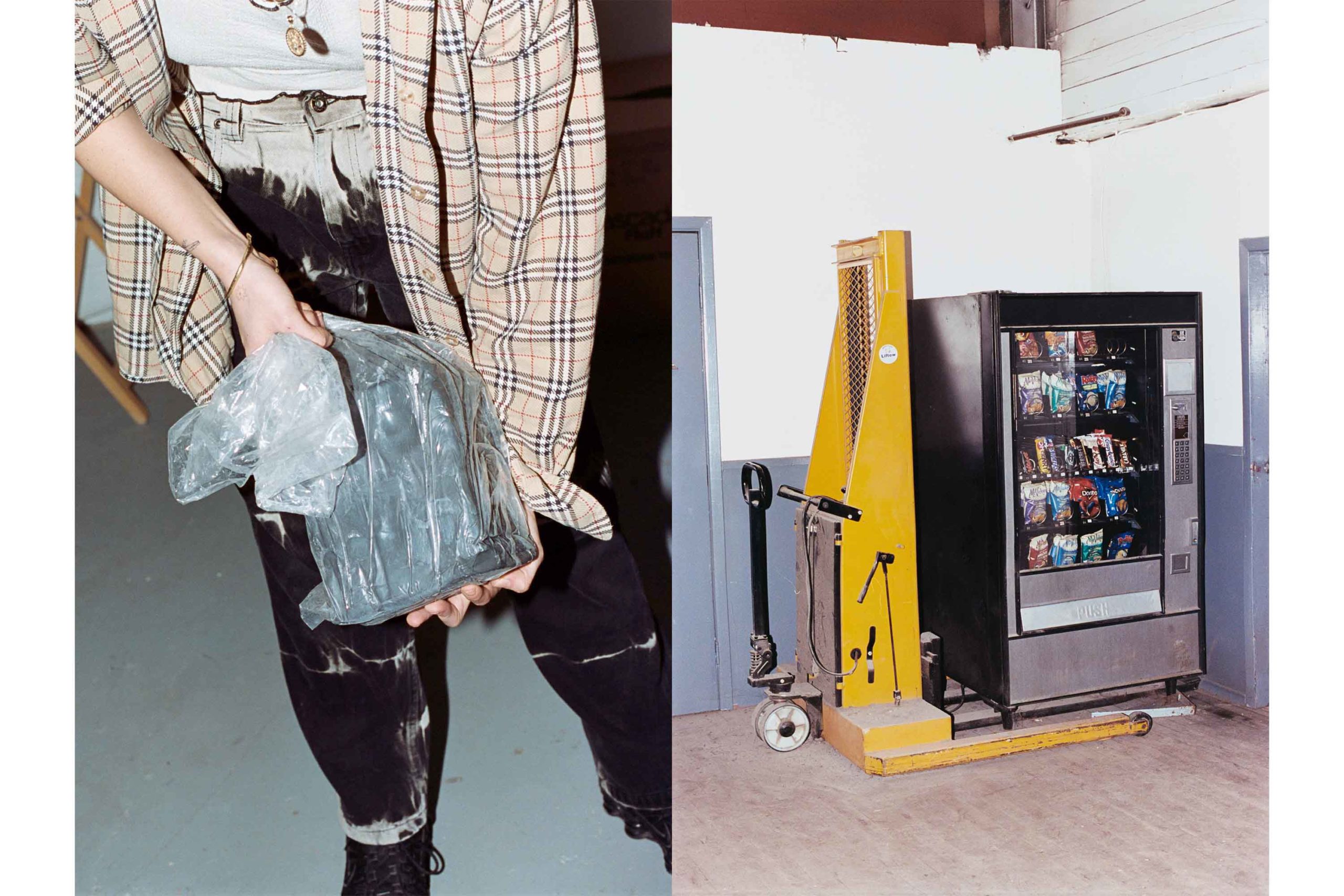
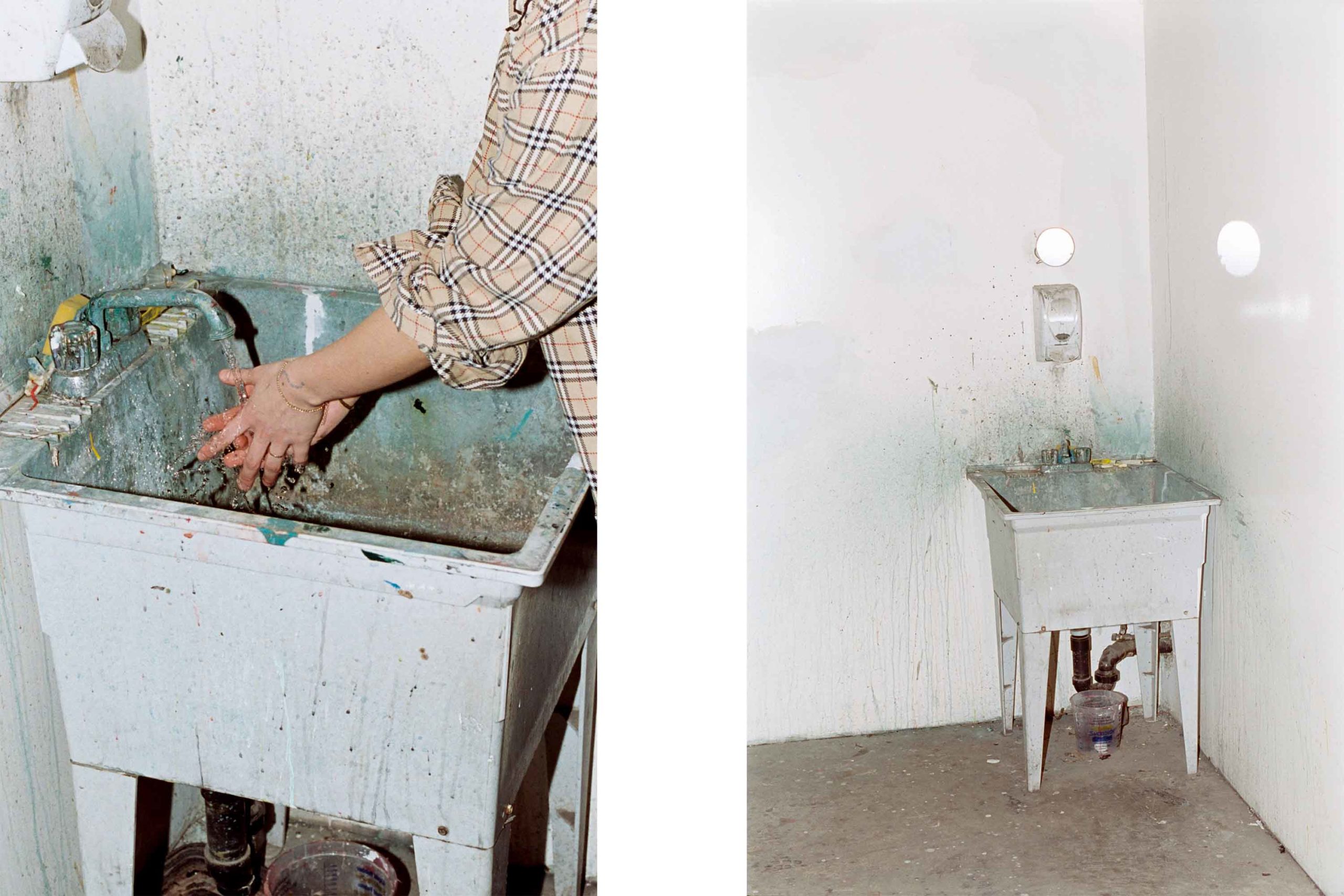
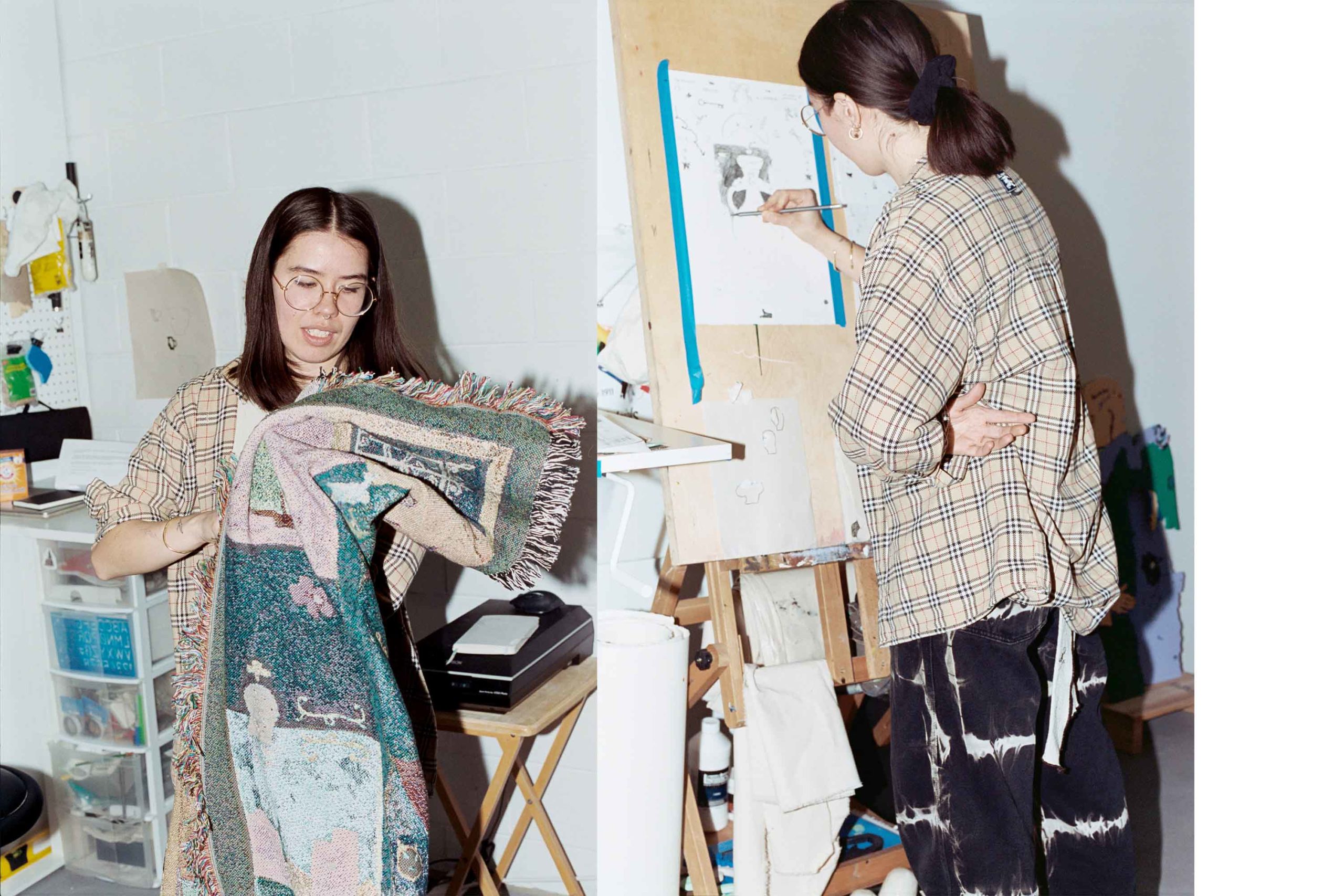
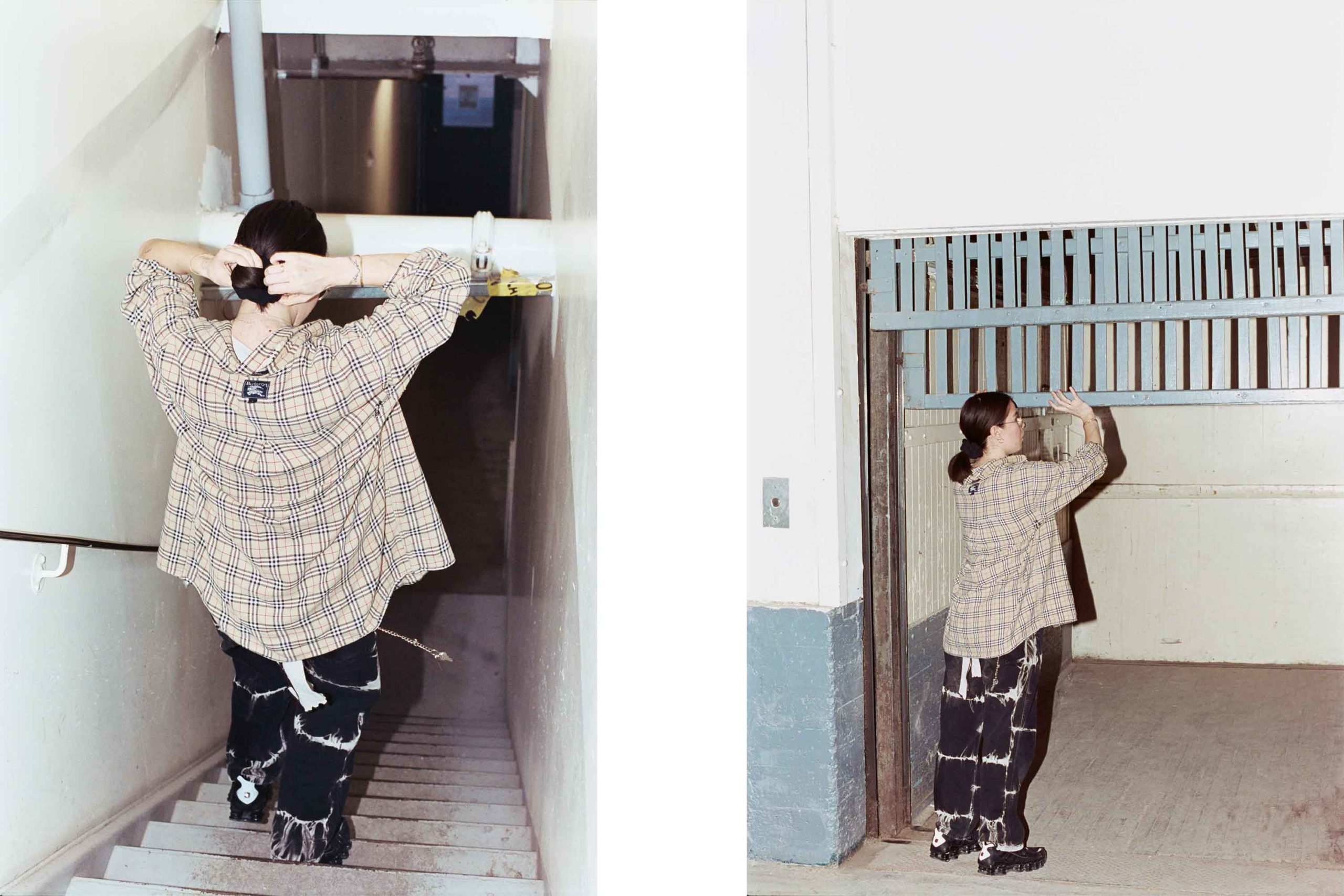
Interview: Kwame Essien
Photography: Justin M. Yong